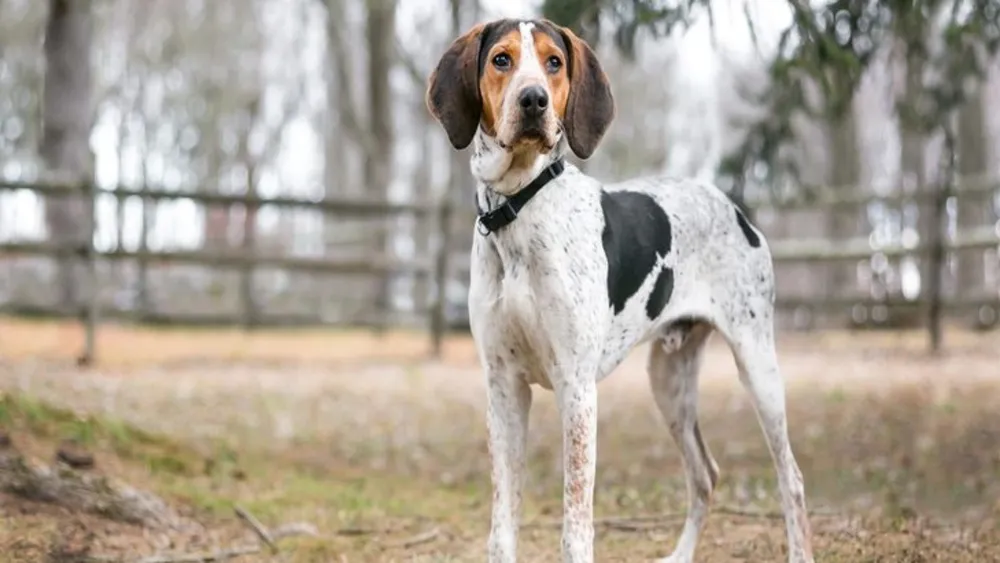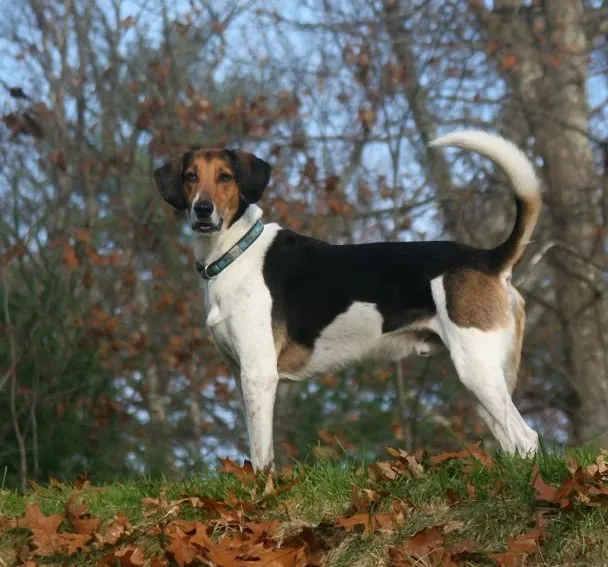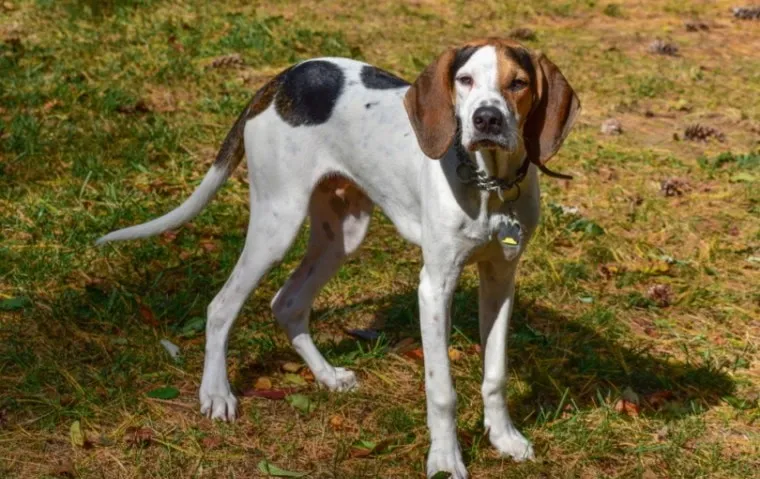Treeing Walker Coonhounds are a popular breed known for their hunting prowess, athleticism, and friendly demeanour. However, one aspect that potential owners often have concerns about is shedding. Do Treeing Walker Coonhounds shed? Understanding the shedding habits of this breed is essential for both current and prospective owners to maintain a clean and comfortable living environment. By gaining insights into the factors influencing shedding and effective management strategies, you can ensure a harmonious coexistence with your Treeing Walker Coonhound.
Treeing Walker Coonhounds are moderate shedders, meaning they do shed throughout the year, but not excessively. Their short, dense coat requires regular maintenance to keep shedding under control. Factors such as genetics, health, and environmental conditions play a role in their shedding patterns. By comprehensively understanding these factors, you can implement targeted strategies to manage shedding effectively.

Shedding frequency varies among individual Treeing Walker Coonhounds, but in general, they shed moderately throughout the year. Despite their moderate shedding, the breed's smooth coat makes grooming and maintenance relatively manageable. With the right approach, you can minimize the impact of shedding on your home and clothing, allowing you to enjoy the companionship of your Treeing Walker Coonhound fully.
Factors Affecting Shedding
Several factors influence the shedding patterns of Treeing Walker Coonhounds, including genetics, health, and environmental conditions. Genetics plays a significant role in determining a dog's shedding tendencies. If a Treeing Walker Coonhound comes from a lineage with heavy shedders, it's likely to exhibit similar traits. Additionally, the dog's overall health can be impacted by shedding. Ensuring your pet receives proper nutrition, regular exercise, and veterinary care can contribute to a healthier coat and reduced shedding.
Environmental factors, such as seasonal changes and indoor climate, also affect shedding. During seasonal transitions, Treeing Walker Coonhounds may experience increased shedding as they adapt to temperature and light variations. Similarly, indoor heating and cooling systems can influence shedding. By understanding these factors, you can proactively address shedding issues and create a comfortable environment for your pet.

Managing Shedding - Grooming and Maintenance Tips
Effective grooming and maintenance are essential for managing shedding in Treeing Walker Coonhounds. Regular brushing with a suitable grooming tool helps remove loose hair and prevents it from accumulating on furniture and floors. Using a de-shedding tool specifically designed for short coats can significantly reduce shedding. Additionally, bathing your Treeing Walker Coonhound with a high-quality, hypoallergenic shampoo not only promotes a healthy coat but also minimizes shedding.
Incorporating a balanced diet rich in essential nutrients, such as omega-3 fatty acids, can contribute to a healthier coat and reduced shedding. Providing your pet with adequate hydration is also crucial for maintaining coat health. Moreover, ensuring your Treeing Walker Coonhound receives regular exercise supports overall well-being and can positively impact shedding. Do Treeing Walker Coonhounds shed?

Shedding Season - What to Expect
Treeing Walker Coonhounds experience seasonal shedding, particularly during the spring and fall. As the weather transitions, they may shed their old coat to make way for a new one. During shedding seasons, you can expect a temporary increase in the amount of loose hair. However, proactive grooming and maintenance during these periods can help manage to shed effectively.
Understanding the shedding season enables you to anticipate and prepare for the temporary increase in shedding. By adjusting your grooming routine and using appropriate tools, you can minimize the impact of shedding on your home and maintain a clean living environment.
Dealing with Allergies and Shedding
For individuals with allergies, shedding can exacerbate symptoms and impact their overall comfort. Treeing Walker Coonhounds are not hypoallergenic, and their shedding can trigger allergic reactions in sensitive individuals. However, implementing proactive measures, such as regular grooming, vacuuming, and maintaining a clean living environment, can help reduce allergens associated with shedding.
Investing in high-quality air purifiers and using allergen-reducing products can further mitigate the effects of shedding on allergies. Additionally, consulting with a healthcare professional for personalized guidance on managing pet-related allergies can provide valuable insights and support.
Controlling Shedding - Products and Tools
Numerous products and tools are available to help control shedding in Treeing Walker Coonhounds. High-quality grooming brushes, de-shedding tools, and shedding control shampoos are effective in minimizing loose hair and maintaining a healthy coat. When selecting grooming products, opt for those specifically designed for short coats and tailored to the breed's shedding tendencies.
In addition to grooming tools, investing in lint rollers, pet hair removers, and washable furniture covers can aid in managing shedding within the home. Regular use of these products can significantly reduce the presence of pet hair on clothing, upholstery, and other surfaces, contributing to a cleaner living environment.

Diet and Nutrition for Minimizing Shedding
Proper nutrition plays a crucial role in minimizing shedding in Treeing Walker Coonhounds. Feeding your pet a well-balanced diet that includes essential nutrients, such as omega-3 fatty acids and protein, promotes coat health and reduces excessive shedding. Consult with a veterinarian to determine the most suitable diet for your pet based on its age, activity level, and overall health.
Supplements, such as fish oil or flaxseed oil, can be beneficial in reducing shedding and improving coat condition. By prioritizing nutrition and providing your Treeing Walker Coonhound with a wholesome diet, you can effectively manage shedding and support its overall well-being.
Home Cleaning Tips
Owning a Treeing Walker Coonhound means dealing with their shedding hair, but with the right techniques and tools, you can keep your home clean and comfortable.
Techniques for Managing Pet Hair at Home
- Regular Grooming: The best way to manage shedding is to catch the hair before it falls. Regular brushing of your Coonhound helps capture loose fur, reducing the amount that ends up around your home.
- Strategic Placement of Pet Beds: Place pet beds in areas where your dog spends most of their time. These beds will catch a significant amount of hair, which can be easily cleaned.
- Use Washable Throws and Covers: Cover your furniture with washable throws or blankets. They can be quickly removed and laundered, keeping your sofas and chairs hair-free.
- Daily Vacuuming: Regular vacuuming is essential. Even a quick daily sweep can make a significant difference in managing pet hair.
Recommended Vacuum Cleaners and Other Cleaning Tools
- High-Efficiency Vacuum Cleaners: Look for vacuums specifically designed for pet hair. Models with strong suction, specialized pet hair attachments, and HEPA filters are ideal.
- Robotic Vacuums: For daily upkeep, robotic vacuums can be scheduled to run automatically, keeping pet hair under control with minimal effort.
- Lint Rollers and Brushes: Lint rollers are great for quick clean-ups on clothing and small areas of furniture.
- Damp Rubber Gloves: Running your hand over upholstery with a damp rubber glove can effectively gather pet hair.
- Microfiber Dust Mops: These mops are excellent for trapping pet hair on hardwood or tile floors.
Tips for Dealing with Hair on Furniture, Clothing, and in the Car
- Furniture: Besides using throws, regularly vacuum your furniture with an upholstery attachment. A squeegee can also be effective on fabric surfaces.
- Clothing: Keep lint rollers handy in your home and car. Washing clothes with a bit of white vinegar can help loosen pet hair during the laundry cycle.
- In the Car: Use seat covers that are easy to remove and clean. Vacuum the car regularly with a handheld vacuum, focusing on crevices where hair accumulates.
- Air Purifiers: To reduce floating hair and dander, consider using an air purifier with a HEPA filter, especially in rooms where your pet spends a lot of time.
By incorporating these tips and tools into your cleaning routine, you can effectively manage the pet hair shed by your Treeing Walker Coonhound, keeping your home clean and comfortable for everyone.
Exercise and Shedding
Regular exercise is integral to maintaining the overall health and well-being of Treeing Walker Coonhounds, including their coat condition and shedding tendencies. Engaging your pet in daily physical activity not only promotes a healthy coat but also reduces stress, which can impact shedding. Interactive play, brisk walks, and outdoor activities provide ample opportunities for exercise and mental stimulation.
By incorporating regular exercise into your pet's routine, you can contribute to a healthier coat and reduced shedding. Additionally, spending quality time engaging in physical activities with your Treeing Walker Coonhound strengthens your bond and enhances the overall quality of life for both you and your pet.

Conclusion:
Understanding and effectively managing shedding in Treeing Walker Coonhounds is essential for maintaining a clean and comfortable living environment while enjoying the companionship of your pet. Do Treeing Walker Coonhounds shed? By considering the factors influencing shedding, implementing grooming and maintenance tips, and prioritizing nutrition and exercise, you can successfully navigate shedding challenges.
Proactive measures, such as preparing for shedding seasons, addressing allergies, and utilizing suitable products and tools, contribute to a harmonious coexistence with your Treeing Walker Coonhound. With a comprehensive approach to shedding management, you can create a nurturing environment for your pet while minimizing the impact of shedding on your home and lifestyle. Embracing the joys of pet ownership, including shedding management, fosters a fulfilling and rewarding relationship with your beloved Treeing Walker Coonhound.
FAQs
- Do Treeing Walker Coonhounds Shed a Lot?
- Yes, Treeing Walker Coonhounds do shed, although the amount varies. They have a short, dense coat that sheds moderately throughout the year, with increased shedding typically occurring during spring and fall.
- What Causes Excessive Shedding in Treeing Walker Coonhounds?
- Excessive shedding can be caused by various factors including poor diet, stress, skin conditions, or health issues. Seasonal changes also play a significant role in their shedding patterns.
- How Often Should I Groom My Treeing Walker Coonhound to Reduce Shedding?
- Regular grooming is key. Brushing your Coonhound 2-3 times a week helps remove loose fur and reduce shedding. During peak shedding seasons, you might need to brush more frequently.
- Are There Any Specific Brushes Recommended for Treeing Walker Coonhounds?
- A bristle brush or a rubber grooming tool is ideal for Treeing Walker Coonhounds. These tools are effective at removing loose fur without irritating their skin.
- Can Diet Affect My Treeing Walker Coonhound's Shedding?
- Absolutely. A balanced diet rich in essential fatty acids can improve coat health and reduce excessive shedding. Consider consulting your vet for diet recommendations.
- Is Shedding a Sign of Health Issues in Treeing Walker Coonhounds?
- While shedding is normal, sudden or excessive shedding can indicate health problems such as allergies, parasites, or other skin conditions. If you notice any drastic changes in your dog's shedding, consult your veterinarian.
- What Can I Do to Keep My Home Clean From Treeing Walker Coonhound Hair?
- Regular grooming of your dog is the first step. Use washable throws on furniture, vacuum frequently with a pet-hair-suitable vacuum cleaner, and consider using an air purifier to capture airborne hair and dander.




